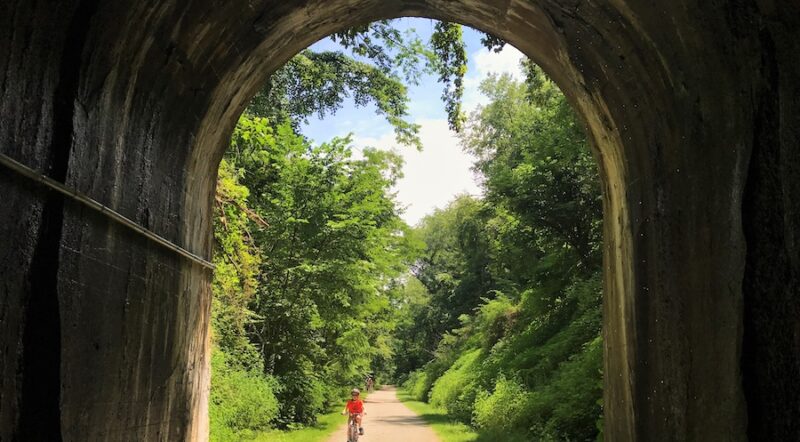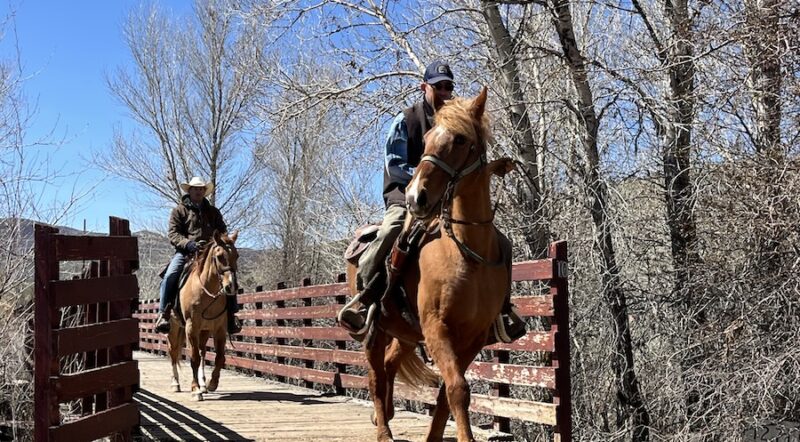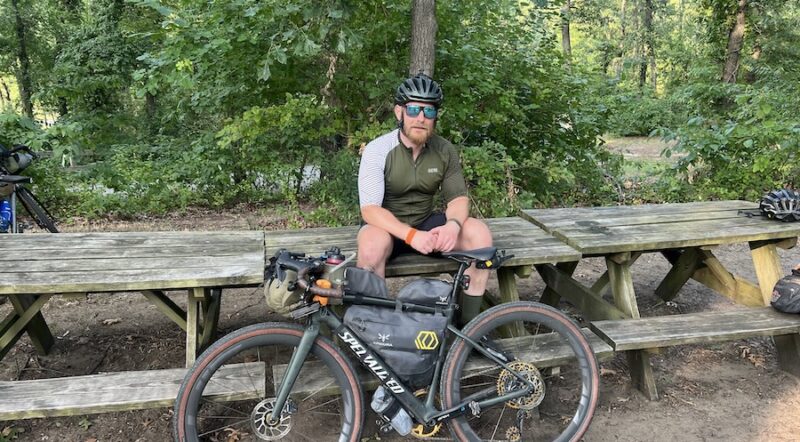Former R.E.M. Tour Manager Creates Rural Connections in Washington
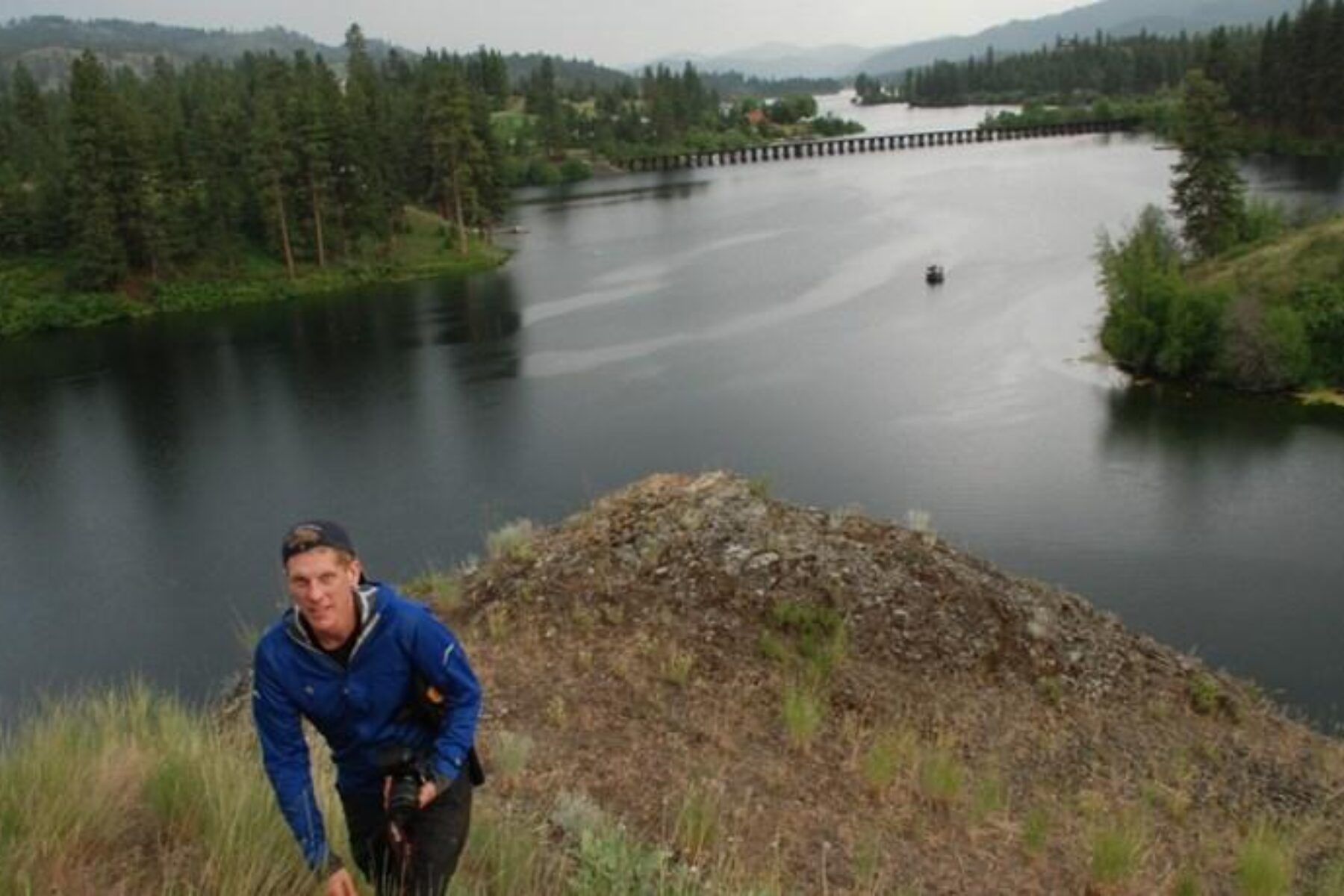
“There’s nothing more positive or punk rock than giving back to your community.” – Bobby Whittaker
It may be a no-brainer that Seattle-born Bobby Whittaker has always loved the outdoors, having been raised by the first American to summit Mt. Everest. It was the city’s music scene, however, that led him to a rewarding 25-year career, first with Sub Pop Records, and then as a manager and tour manager with iconic bands including Mudhoney and R.E.M.
A decade ago, Whittaker read about a former rail line in rural Ferry County, Washington—a place he’d long been going to “slow down.” Now the president of Ferry County Rail Trail Partners and fellow trail advocates are on their way to completing the 25-mile “rock n’ roll” rail-trail, which is changing people’s lives.
Do you have a background in the outdoors?
I grew up in the outdoors and was witness to a somewhat intense and intimidating level of it at times; my father was the first American to summit Mt. Everest, and I often heard stories of his expeditions.
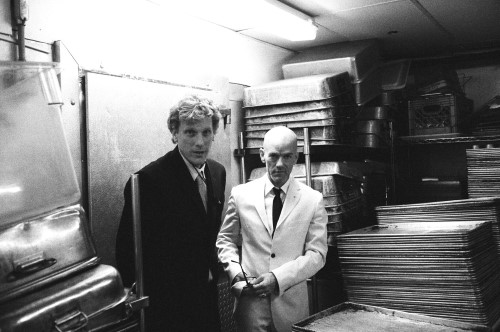
But that wasn’t quite my style. I gravitated to a simpler outdoor experience.
As an adolescent I was immersed in the small, tightknit music scene in Seattle. That evolved into me working at Sub Pop Records and then managing Mudhoney.
After 12 years with Mudhoney, I went on to become R.E.M.’s tour manager. This new team was really passionate about historic preservation in their hometown of Athens, Georgia, and I learned a lot about civic duty from them.
Having been born and lived in Seattle, how did you end up in Ferry County?
I have always had a strong connection to nature and have enjoyed taking breaks in more rural areas to slow down. My mentality has flipped more recently; now I prefer living my life in a rural area and having short visits in the city. In the 2000s, I went so far as to purchase 25 acres adjacent to the Colville National Forest.
I think Ferry County is Washington State’s best-kept secret. It’s an authentic mining and logging town with such beautiful scenery and diverse demographics.
What inspired you to get involved in the Ferry County Rail Trail Project?
It was a culmination of a lot of things I’m interested in: public space, environmentalism and historic preservation. I would be on music tours going 1,000 miles per hour—and then I’d come back to a standstill—so I harnessed that momentum and redirected it to trail development.
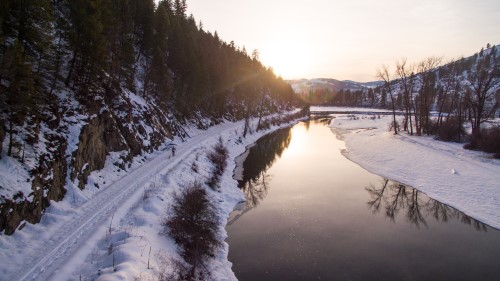
Ferry County is rich with natural features such as mountain ranges, lakes, rivers and rugged terrain, but it doesn’t have a public parks department. It doesn’t have a non-motorized path to connect the towns. What we do have are highways with 4-inch shoulders and logging trucks passing through every few minutes. Kids have to take a bus, car or truck to get to school.
I had noticed in the paper that the rail line [a former corridor of the Great Northern Railway] was ceasing operations. I thought it would make an incredible trail, and it was an opportunity to give back. There’s nothing more positive or punk rock than giving back to your community.
RELATED: October 2016 Trail of the Month: Washington’s Ferry County Rail Trail
What was it like for someone new to the professional trail world?
It’s been an education. I hadn’t known about the politics and effort it takes to build a trail. I was a little naïve. I thought, “People will support it, and we’ll have a trail—boom!”
I’m also an outsider that recently moved to this community, which is pretty tight knit. People were a little apprehensive about how this trail could alter their existence and their way of life.
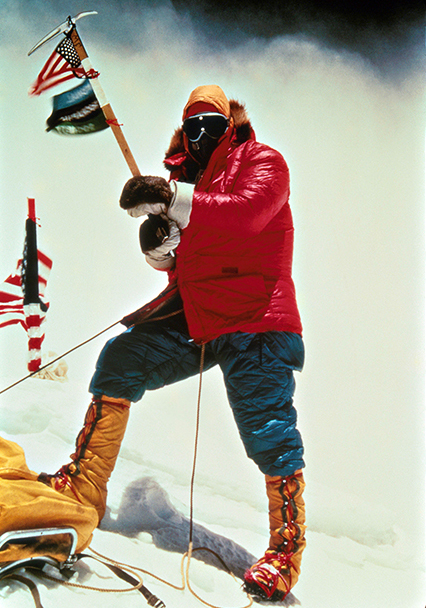
How did you gain support from local residents?
We actually used Rails-to-Trails Conservancy’s website information, including the Trail-Building Toolbox, to educate the community on the benefit of trails. The materials were spot on: adjacent landowners fighting it—supporting it—and then becoming advocates.
With no parks department in Ferry County, how did you manage to fund the trail’s development?
Me coming in with my rock n’ roll background and understanding of the power of marketing—I figured I could garner support. But I was starting in the dark. So I reached out to people who had experience working on rail-trails. Then we organized and officially became a 501(c)(3).
I learned that we needed to preserve the corridor through railbanking. The local commissioners agreed they should preserve the right-of-way, they just didn’t agree on what they wanted to use it for. I contacted Charles Montagne—who I consider the Michael Jordan of trail development attorneys—and he helped us pro bono.
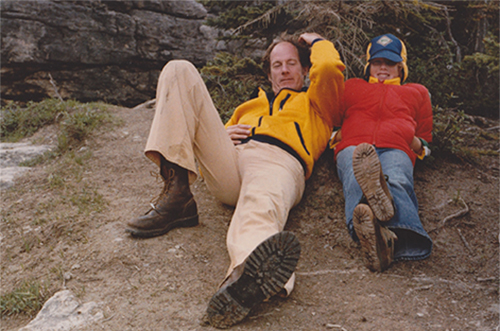
We also aggressively went after a National Park Service Rivers, Trails, and Conservation Assistance Program planning grant, which helped us develop a community-driven concept plan. When we won that, it was a huge step. Our county didn’t have the resources to work on trails, so I knew we needed this help to move the project forward.
The commissioners adopted the plan, and that gave us the foundation to start winning more grants.
Some of my music connections also helped us raise the project’s profile. R.E.M. signed guitars. Red Hot Chili Peppers and Pearl Jam signed skateboards. Eddie Vedder donated a signed ukulele. Auctioning these things off financed a large portion of the early development.
It became our “rock n’ roll” rail-trail. That profile helped bring a lot more awareness.
What was the most important element to this trail’s development?
Definitely our many partners. It’s in our name. We have shocked people with how much we’ve done with so little money because of our strong partnerships.
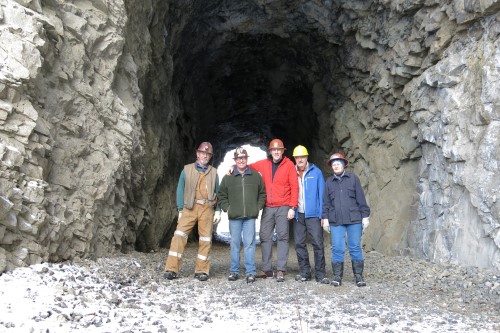
We have individuals and local businesses who donate hours of trail grading and compacting, and provide in-kind materials; these things are extremely helpful for grants that require matches. We’re a little unconventional, but we have a solid foundation and engaged supporters. It’s been an incredible experience.
Right now we’re finishing phase three of our construction, which includes more surfacing and our first bathrooms, with a Washington Wildlife and Recreation Grant.
We just got 5.5 miles of waterfront surfaced on Curlew Lake as well as 8 miles along the Kettle River. Now people have access to beautiful public waterfront and safe connections to two school complexes and four towns through this trail.
What’s been the trails impact?
Use has spiked since we’ve gotten more surfacing done [approximately 14 miles]; locals of all ages are getting out and doing more physical activity than they have in years. We are also seeing more tourists on the trail.
The trail also plays a role in historic preservation and education. It’s partly a walking classroom and history lesson on land that’s been inhabited for thousands of years.
I used to own the old Republic Fire Hall, which is now an amazing brew pub. Every time I go in, someone tells me who they saw on the trail or who bought a new bike—and the closest bike shop is at least an hour away over a mountain pass. The proprietor recently said to me, “Everybody is so excited to have somewhere to go.” It shows what a safe community connector can do.
There’s a philosophy that every trail connects. I’ve always enjoyed being a part of things, and this project embodies that. I had no idea how beneficial this experience would become on a personal level.

Donate
Everyone deserves access to safe ways to walk, bike, and be active outdoors.
